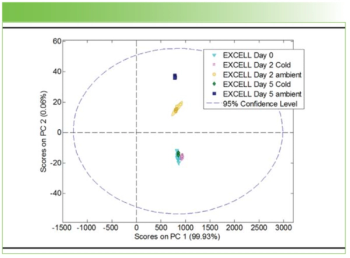
The Role of Vibrational Spectroscopy Techniques in Radiotherapy
A recent review article explored how vibrational spectroscopy techniques have been used in radiation biology.
Radiation biology examines how living organisms are impacted by ionizing radiation. Understanding how this radiation can impact the molecular structures and biochemical processes that make up living organisms help us understand biological systems on a deeper level. With this notion in mind, numerous studies have examined the role vibrational spectroscopic techniques, such as Fourier transform infrared (FT-IR) spectroscopy and Raman spectroscopy, in examining the biochemical effects of ionizing radiation exposure (1,2).
A recent study from Technological University Dublin explored this topic. Researchers led by Aidan D. Meade published a recent review article in Radiation that discussed how vibrational spectroscopic techniques can provide insights into the molecular and biochemical effects of radiation exposure (2). Their work advances our knowledge in radiation biology, which can help oncologists develop better cancer therapies for patients (2).
Radiation therapy is a common practice in oncology. It is designed to use high doses of radiation to kill cancer cells (3). Millions of patients worldwide rely on its ability to target and destroy malignant cells (2). There are two types of radiation therapy available: external beam and internal (3). What type of radiation therapy patients get depends on several important factors, including the location of the tumor, the type of cancer, the size of the tumor, and the patient’s medical history, among other factors (3). However, despite the widespread use of this therapy, the biological impact of radiation on healthy cells and tissues has long presented challenges, not to mention side effects that radiation therapy has demonstrated on patients (2).
In their study, Meade’s team proposed that vibrational spectroscopy techniques, including FT-IR spectroscopy and Raman spectroscopy, offer a powerful, non-destructive means to unravel these effects at the molecular level (2). Radiation-induced damage is complex, affecting a wide range of biological molecules such as DNA, lipids, and proteins (2). These changes, in turn, influence metabolic processes and cellular functions. Vibrational spectroscopy detects specific molecular vibrations, acting as a "biochemical fingerprint" for samples, making it ideal for identifying subtle yet critical alterations caused by radiation (2).
Meade’s team explored the application of vibrational spectroscopic methods across a spectrum of biological models, from isolated DNA and lipid membranes to whole tissues and diverse organisms. The team showed through other published studies that vibrational spectroscopy is particularly suited to detecting DNA damage, lipid peroxidation, and protein modifications (2). These molecular insights not only deepen the understanding of radiation’s effects but also hold promise for identifying spectral biomarkers of exposure (2).
In their review, Meade and the team highlighted how vibrational spectroscopy is being integrated into clinical radiotherapy. Meade’s review outlines how these techniques could serve as rapid, cost-effective, and minimally invasive tools for assessing patient-specific responses to radiotherapy (2).
The review article also explores how advancements in spectroscopic technology are overcoming existing limitations. For instance, improvements in resolution and sensitivity are enabling more detailed and accurate assessments of radiation-induced changes (2). Emerging applications include real-time monitoring of radiotherapy’s effects and the development of novel diagnostic tools for radiation exposure (2).
Despite its promise, challenges remain. Translational barriers, such as the standardization of protocols, clinical, regulatory, and peer review, and the integration of advanced data analysis techniques, need to be addressed to bring spectroscopy into routine clinical use (2).
The findings of Meade and his team underscore the transformative potential of vibrational spectroscopy in both research and clinical settings. By offering a deeper, more nuanced understanding of radiation’s impact on biological systems, these techniques promise to enhance the precision and efficacy of radiotherapy (2).
References
- American Society for Radiation Oncology, Radiation Biology. ASTRO.org. Available at:
https://www.astro.org/affiliate/arro/resident-resources/educational-resources/physics-and-biology-resources/radiation-biology (accessed 2024-12-3). - Monaghan, J. F.; Byrne, H. J.; Lyng, F. M.; Meade, A. D. Radiobiological Applications of Vibrational Spectroscopy: A Review of Analyses of Ionising Radiation Effects in Biology and Medicine. Radiation 2024, 4 (3), 276–308. DOI:
10.3390/radiation4030022 - National Cancer Institute, Radiation Therapy. Cancer.gov. Available at:
https://www.cancer.gov/about-cancer/treatment/types/radiation-therapy#:~:text=Radiation%20therapy%20kills%20cancer%20cells,your%20teeth%20or%20broken%20bones . (accessed 2024-12-03).
Newsletter
Get essential updates on the latest spectroscopy technologies, regulatory standards, and best practices—subscribe today to Spectroscopy.





